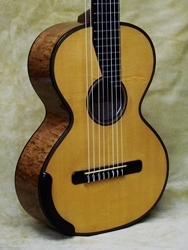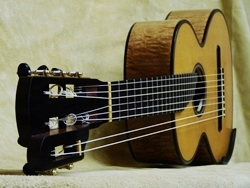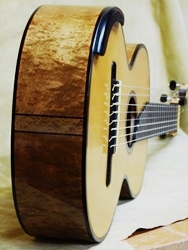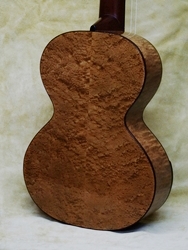I’ve designed a number of different models during my guitar making career, some of which have been in use for many years, while others are more recent. A few that have been omitted here were designed for one-off custom jobs, and some older shapes have gone into retirement or else evolved into new ones.
In 2023 I added a couple of new body shapes from the early romantic era to the existing collection – one, a copy of D and A Roudhloff’s X-braced Melophonic guitar (circa 1840) and another based on an Etienne Laprevotte 1836 guitar, which has an elliptical sound hole and a carved back. So far I have used these body shapes for two lute-guitars that I built for Rob MacKillop in 2023-24. The Melophonic one has 13 strings and is tuned in D minor for baroque music, while the Laprevotte body is a 10 string version for renaissance repertoire. I have also built a six string copy of the Melophonic guitar, and very recently, a steel-string version – the body shape is in fact very similar to a Martin guitar of the same period. Thanks to Rob MacKillop who kindly loaned me the instrument to study. I shall be making a six string with the Laprevotte body too, at some point I expect.
Of the five earlier models in current use, three are full size ones inspired by, or copies of early 20th century instruments and two small-bodied ones derived from 19th century guitar shapes.
Model 08 (1998) – a small-bodied shape inspired by Torres F.E. 13 built in 1860. I made some minor revisions to the design in subsequent years. The small body size means that only 5 fan braces are needed to support the dome of the lower bout.
In a change from my usual fan braced classicals this particular guitar pictured here was built as a cross-over instrument – the top is Port Orford Cedar ( an American specied of Cypress ), which is X braced. The back and sides are quilted Maple with ebony bindings. A wide piece of rosewood was laid into the inside of the back to provide greater stiffness to the maple, which would otherwise have been too soft and flexible to provide sufficient attack or projection.
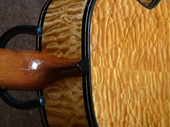
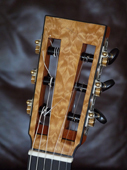
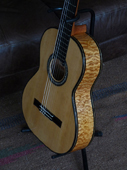
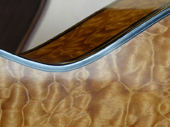
Model 12 (2004) – my most frequently used design for a full size concert guitar. This model evolved from earlier body shapes, originally inspired by the work of Antonio de Torres, Domingo Esteso and Hermann Hauser. Its immediate predecessor in this size bracket was Model 10, based on Torres S.E 83 (1885).
Typically, I use spruce and Indian rosewood for this model, but the brief for the one pictured here was for “something pretty”, so I obliged with Birds-eye Maple back and sides with little squares of mother-of-pearl inlaid into the rosette border, front purfling, head-facing and tie-block.
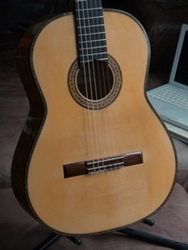
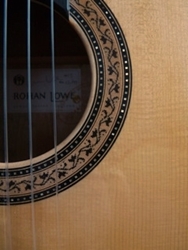
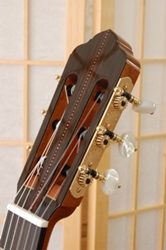
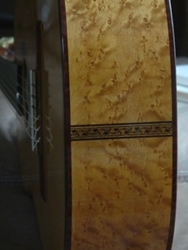
Model 14(2010) – a copy of a 1929 Santos Hernandez flamenco guitar. One of the most outrageously good guitars I’ve ever heard. It could also be used for a classical. I did some restoration work on the original in 2008 and made a plan of it. This particular guitar was built as a cross-over instrument, although the cypress back and sides give it the appearance of a flamenco guitar.
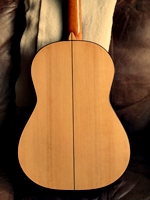
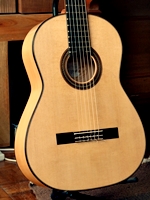
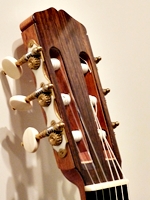
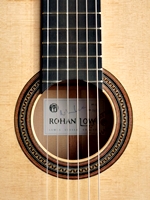
Model 17(2015) – a copy of the 1940 Hermann Hauser I guitar played by Julian Bream for many years. I had the original in the workshop in 2007 for some polishing repairs, so I took the opportunity to study it and make a plan.
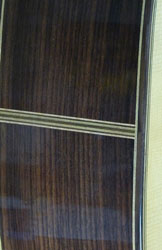
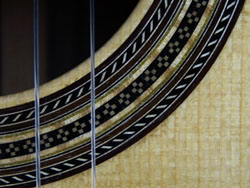
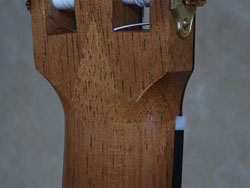
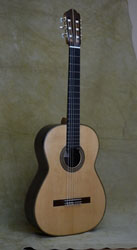
Model 18(2017) – based on an 1840 s pattern used by D & A Roudhloff for their eight string guitar. The top of the pictured guitar is alpine spruce, while the back and sides are an unusual and very beautiful blistered birds-eye maple. I employed my X-brace pattern for the top, designed in 2009, which itself was inspired by the Roudhloff brothers’ work. The Roudhloffs used both ladder and X bracing in their 8-string model. I sometimes use the X-brace pattern in models 08 and 12 too, as an alternative to fan-bracing.
